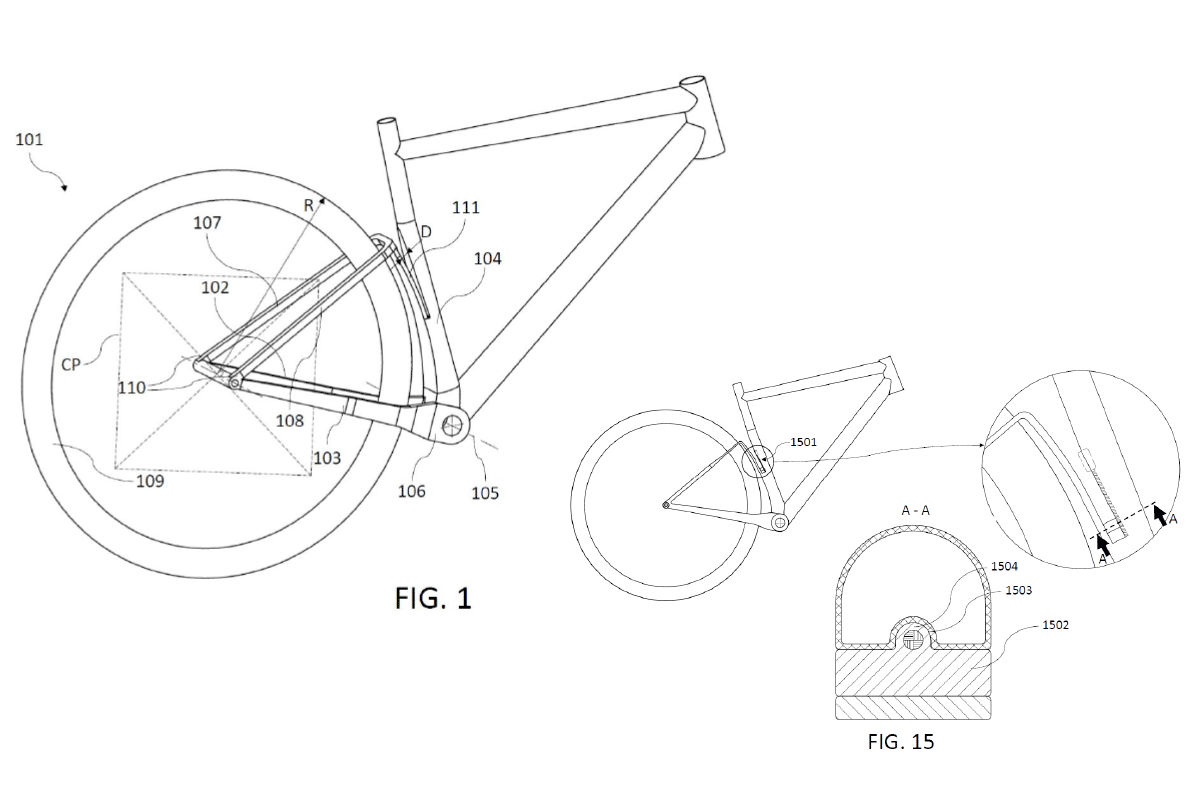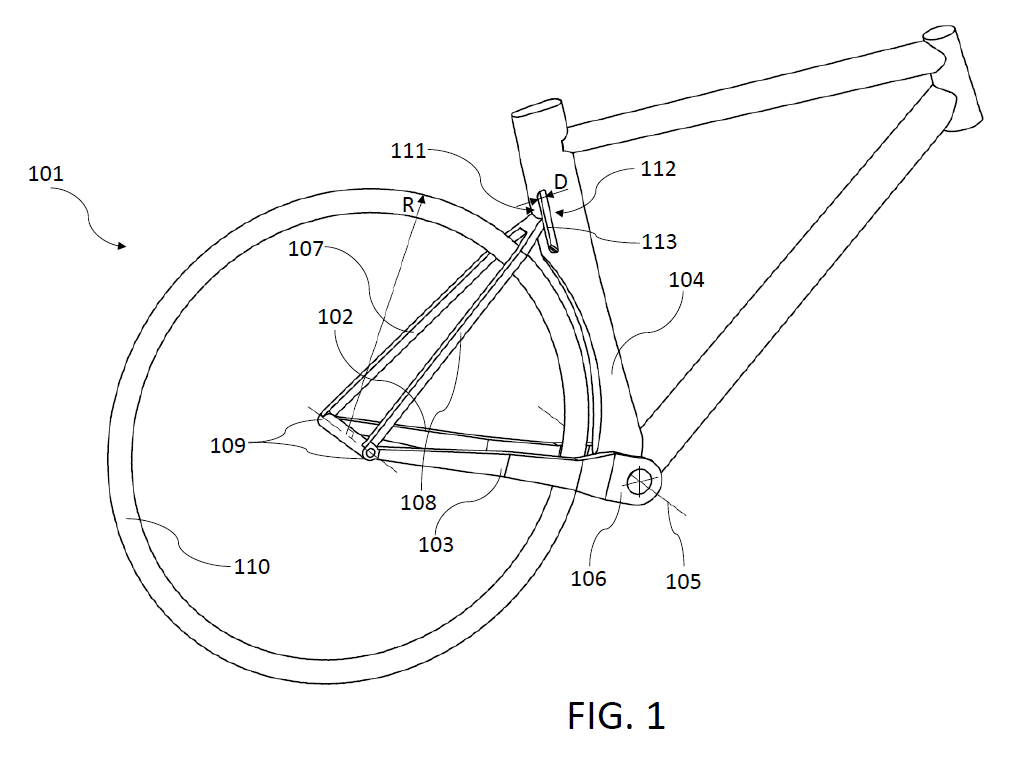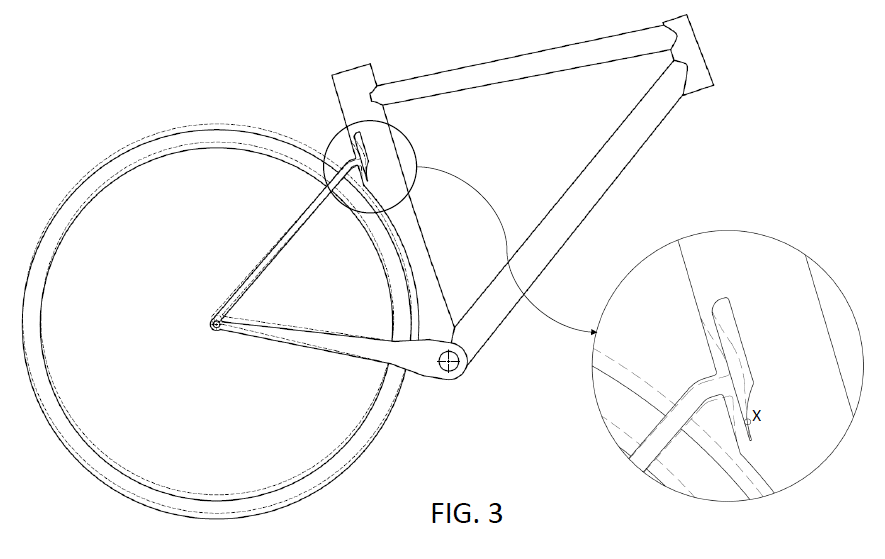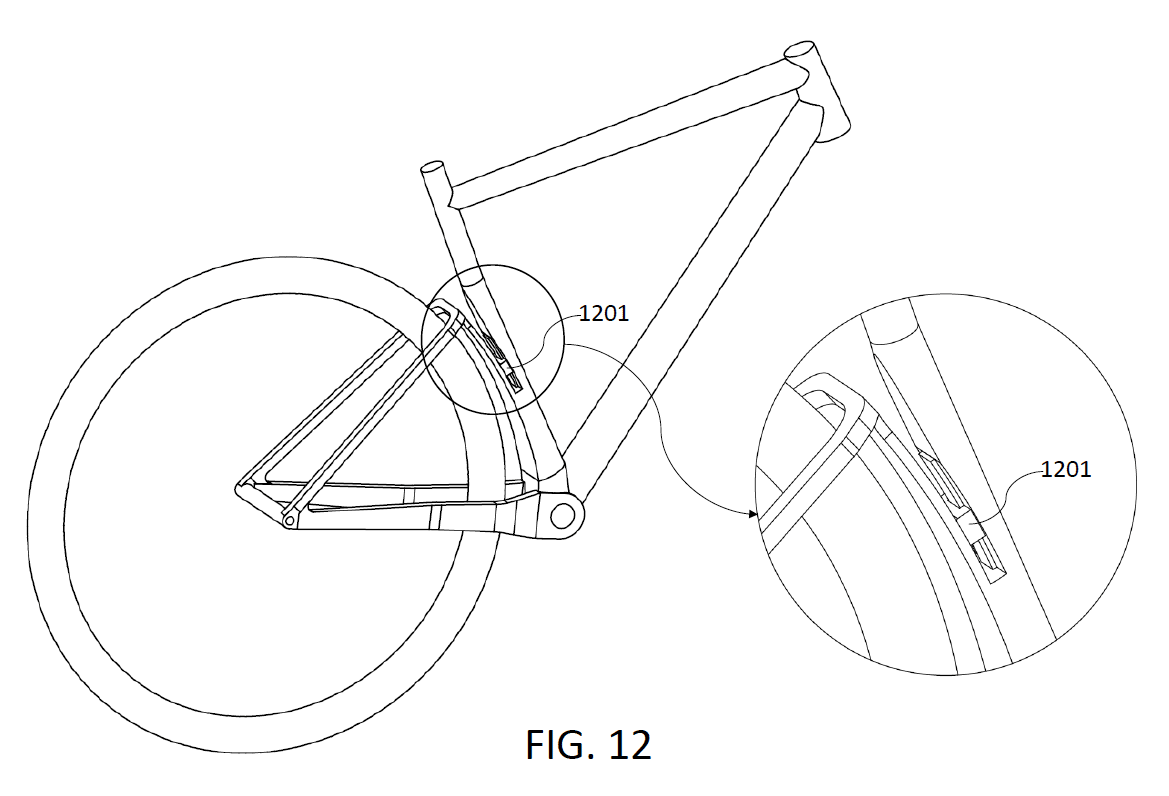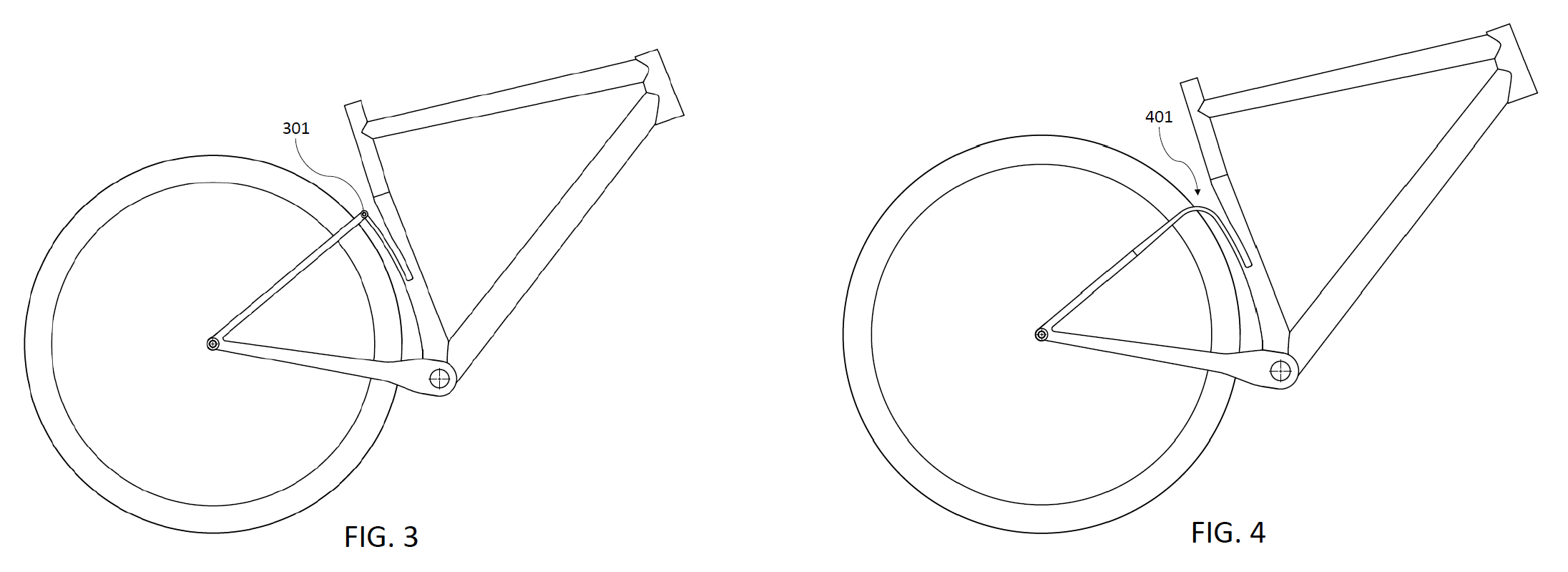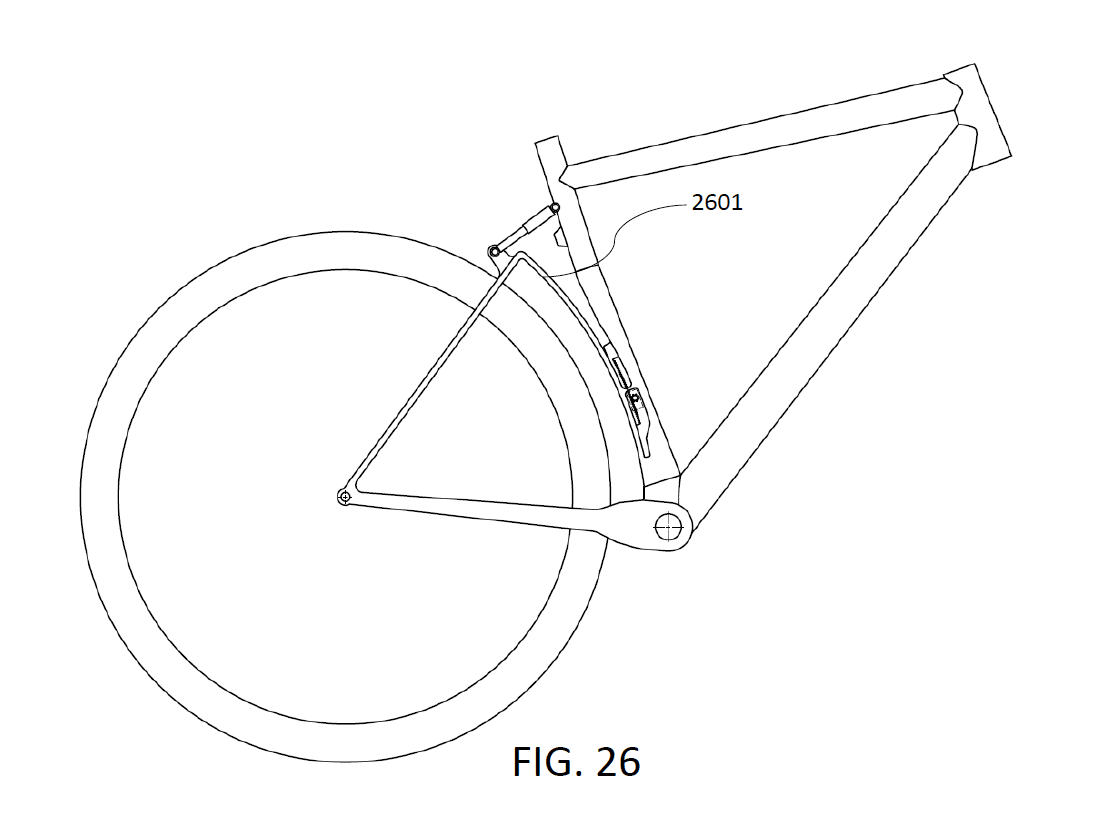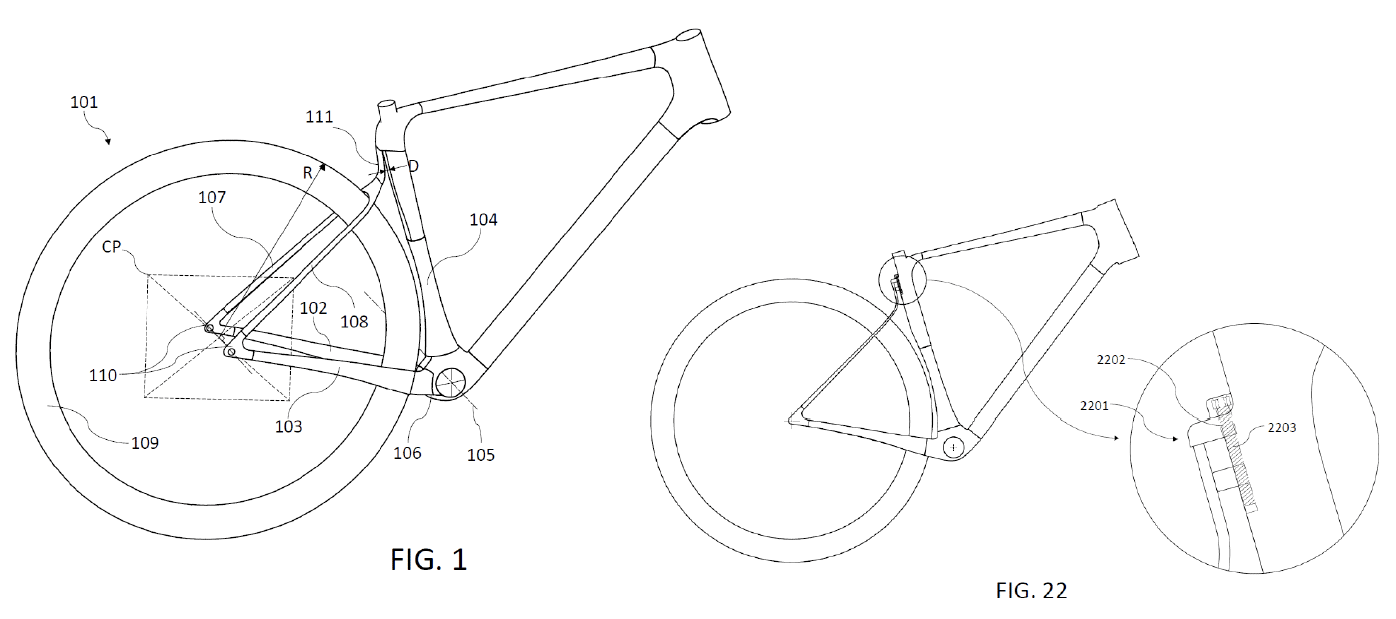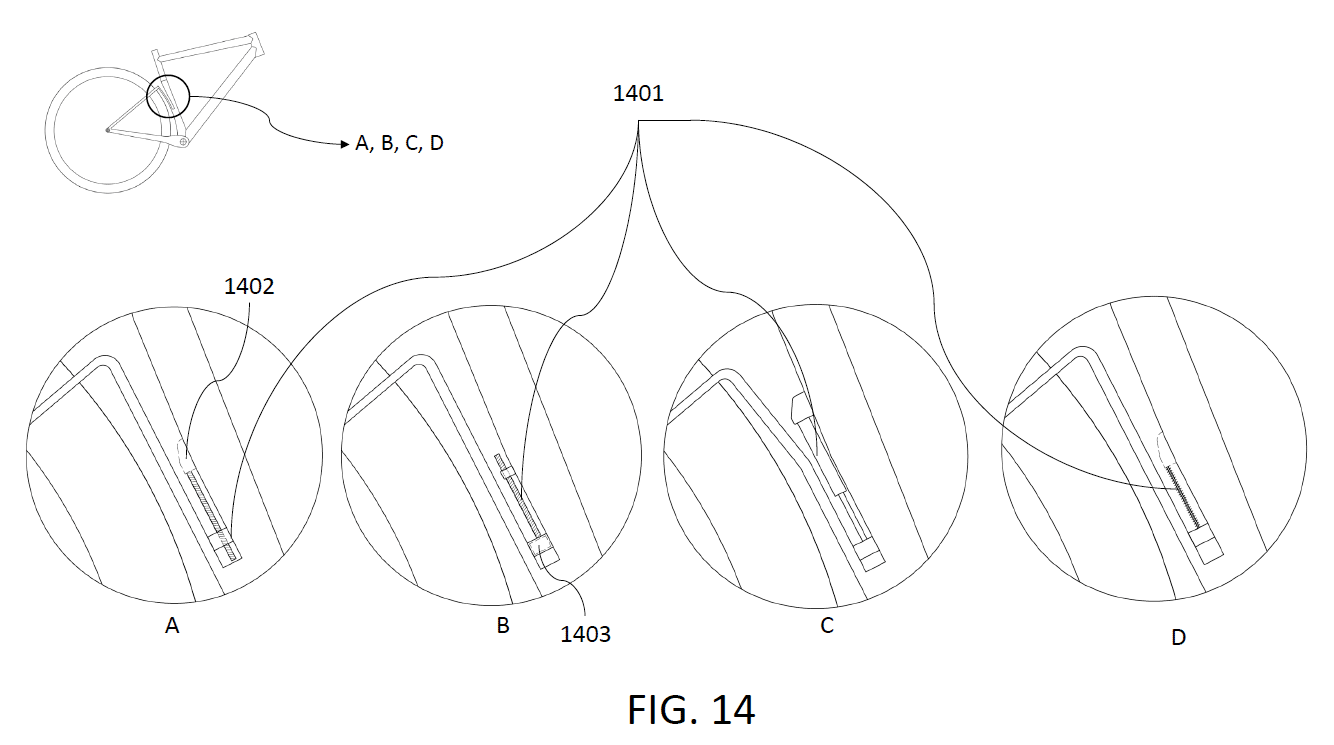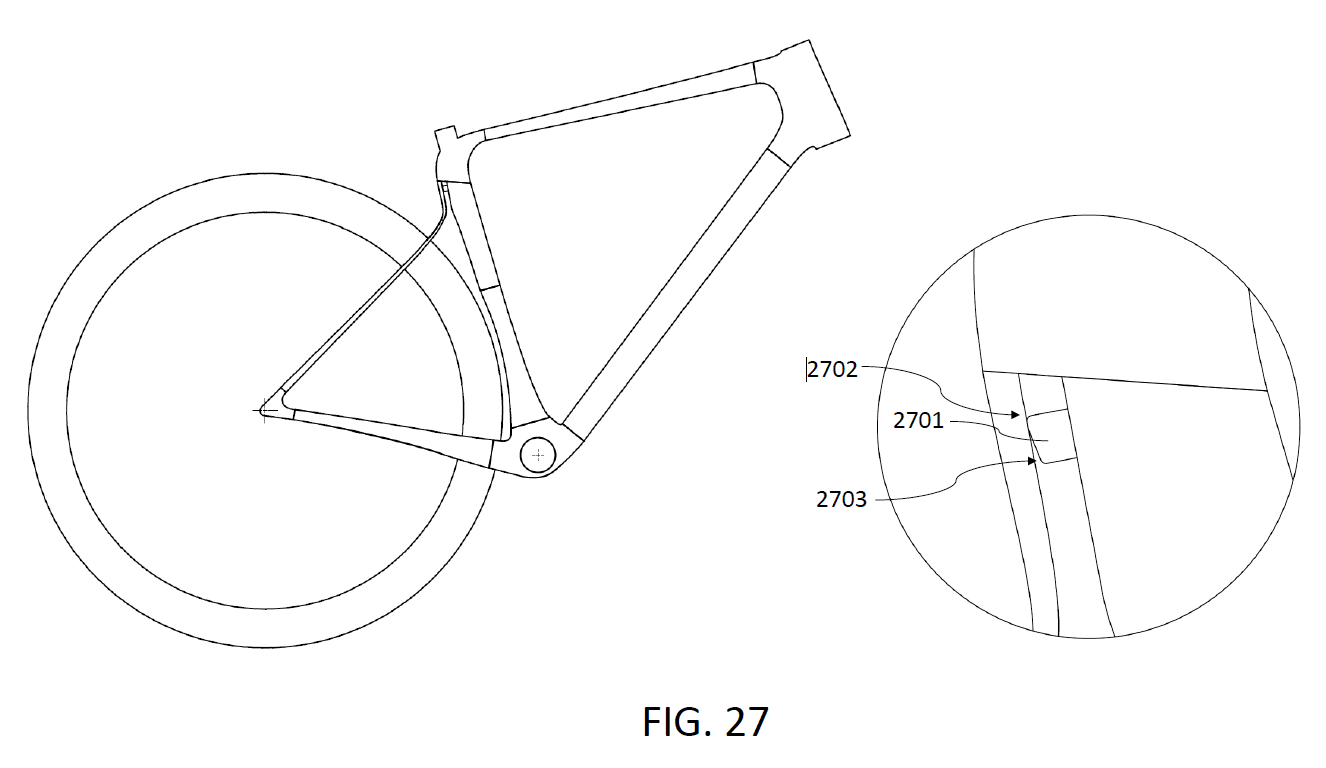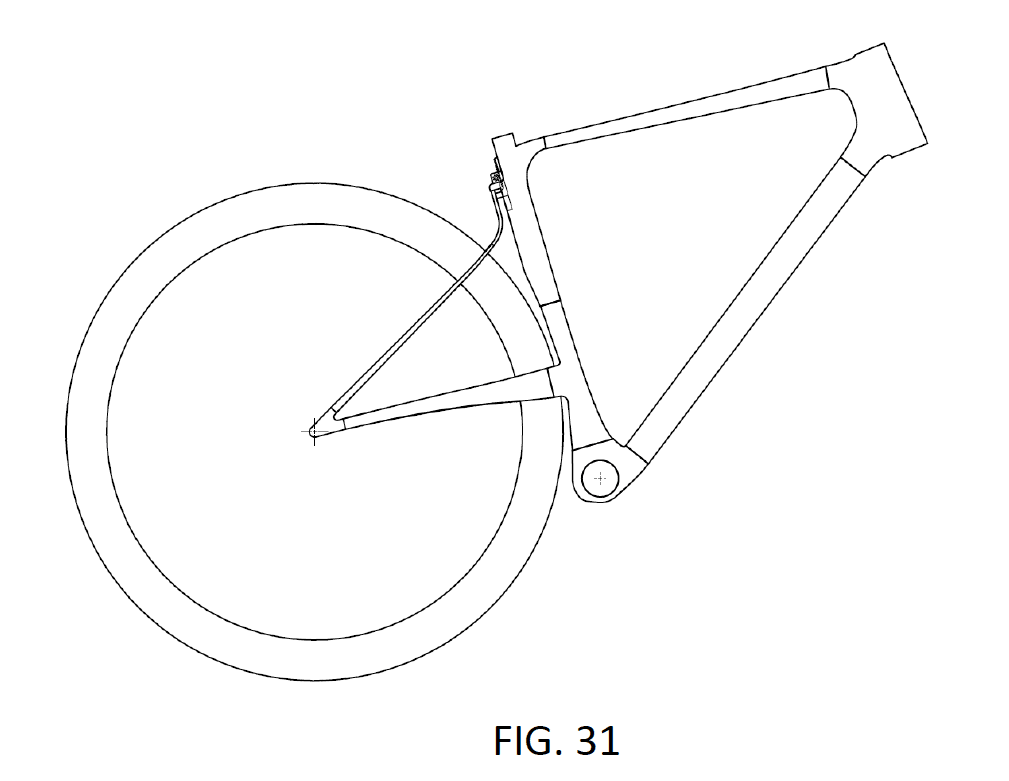Lauf changed the game for short travel front suspension, and if this patent is any indication, they’re about to do the same for short travel rear suspension. And it’s more than just a concept, it’s something they’re moving into the testing phase for future production. If you’re keen on an ultralight, efficient, short travel gravel bike, Lauf is working on just the thing for you…
Why short travel for gravel?
Before we dive into the nuts and bolts of their three patent applications, it’s important to know why they’re doing it. For the same reason they believe their composite fiber leaf springs are the perfect solution for gravel forks, they think this will revolutionize the rear of the bike, too. The big problems with short travel suspension designs is that most of them still rely on some form of linkage-driven system. That means both weight and complexity. And friction. And, sometimes, design compromises.
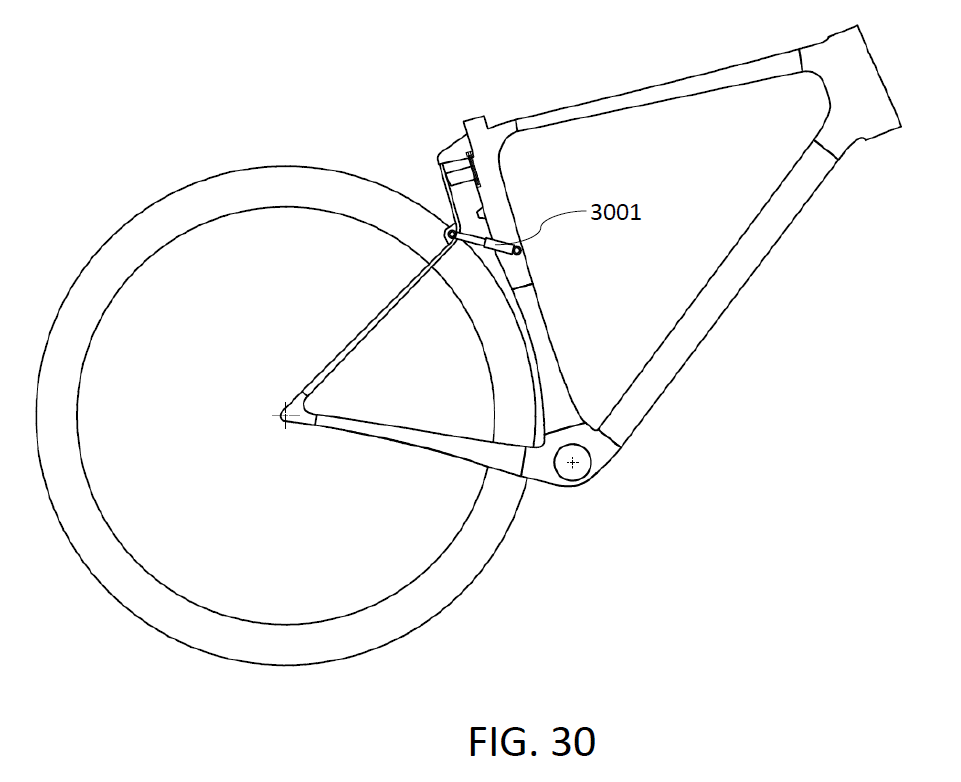
The Lauf system aims to eliminate all of those downsides. And give you control over how stiff you want the suspension to be, with the ability to change it in real time while riding.
As for why, well, because suspension can help make you faster, ride for longer, and improve comfort and control. Not only can it soak up the bigger hits like washboards, rain gutters and pot holes, but a system with virtually no friction could potentially do wonders for reducing vibration, too.
Seriously, no compromises?
Well, maybe one, depending on who you ask. Lauf’s forks have no adjustable damping. There is some inherent damping from the way their S2 fibers flex, so it’s not totally uncontrolled. But by and large, their forks are not damped and can flex quickly and freely. Which is the exactly the selling point according to Lauf. Without damping and friction, their forks can react instantaneously to any size bump. And because the travel is so short, there’s no real need to damp the movement…it’s not going to rebound so much that you lose control, nor will it smash through its travel and bottom out harshly. Chances are you could ride a Lauf fork for years and never bottom it out, actually.
But, for some, the lack of damping is technically a compromise to saving a massive amount of weight. Personally, I’d take the weight savings and small bump compliance for these short travel applications. If you’re with me, keep reading, because it’s about to become an option for rear suspension, too.
How does Lauf’s rear suspension design work?
Well, they’re proposing a few different ways, mostly with variations on seat stay shapes and how those stays are attached to the seat tube. Here are the variations:
This one’s designed for the shortest travel range. it relies on a small, flexible portion of seat tube separated from the main, front portion of the seat tube by a small cavity (113). Realistically, Lauf’s co-founder and designer Benedikt Skúlason says this one’s ideally suited for just 10-15mm of travel.
The drawings suggest it could be incorporated into aero-shaped frames, and you could even have a soft cover over that cavity to improve aerodynamics. This would be beneficial for long distance aero road bikes (think triathlon) where vibration can sap your energy.
The next design relies on a flexible leaf spring originating lower on the seat tube and running almost parallel to it. It allows for more travel, and depending on the shape and length of it combined with a thinner, flatter upper section on the seatstays, they can easily control the travel and feel of it. On this design, they say their target is 30mm of travel.
The design is flexible (puns aside) in that you could add a pivot, or curve the whole thing to create one longer leaf spring. Each has its own benefits -pros and cons in terms of clearance, lateral stability, adjustability, etc.- and the breadth of the filing will certainly give Lauf the opportunity to do what’s needed in different applications…or licensing.
How big can it go? Benedikt says much above 30mm of travel, you’d probably want to add damping, and they have options for that. But travel could go to 70-80mm with the right materials. But as you add more length to the leaf spring, you’d need to be able to better control that motion. The drawing above shows how a damping unit (not a shock) could be added.
The final iteration flips the leaf spring to the top of the seat tube, which has the benefit of putting any mechanical or electronic adjustable insert further away from mud and tire spray. This design caps out around 30mm of travel (their target for a gravel bike), mainly due to the constraints on leaf spring length.
And it’s adjustable?
Oh yeah, and in more ways than you might think. One of the designs uses a moveable insert. Set it low and it’ll make the system stiffer overall by allowing less of the “leaf spring” portion to flex. Slide it up and it won’t make contact until you’re midway through the stroke, so you get better small bump compliance but with more end-of-stroke support.
Depending on the design, they’re looking at several ways of making it user-adjustable while riding. One uses a lever that you’d release and slide the adjustment point up or down. Another uses something like a long screw that could be turned manually (screwdriver), by cable or hydraulics (remote lever) or even a motor (buttons on your bar) to drive the adjustment point up or down. That last one could potentially be linked to eTap, Di2 or other electrical shifting drivetrain controls.
And this design uses a shaped insert to give it a variable contact patch as the spring flexes. In other words, they’ve made a leaf spring progressive. Brilliant.
They’d also adjust at the layup based on frame size and intended rider weight. So, small frames would likely have softer springs, and larger sizes stiffer. So, the starting point is closer to ideal, then you can tweak it to your liking. (BTW, they actually started shipping “size specific” spring rates on their forks on complete bikes about a year ago, but it was a quiet rolling change to their line)
But that looks like a pivot to me…
Yes, but no, but sort of. The patent filings mention a pivot at the front of the chainstays (but it’s not shown in the drawings). This allows them to set the chainstays higher (about 100-125mm above the BB) and wider, opening up room for more tire clearance without running into chainstay/chainring/chain clearance issues. Which to us means it could be used for a short travel mountain bike…
Wait, this could work for mountain bikes!?!
The patent filings also mention the use of an elastomer bump stop or other means of slowing things down at the end of travel. They say this could be useful on longer travel applications, which would also likely benefit from a lower pivot point. Why? Because said pivot would reduce the stress put on the composite frame materials to handle all of the flex. Which is a good thing when you start talking about more travel.
Setting the pivots higher also benefits pedaling performance. It sets the initial motion of the rear axle’s path in a slightly rearward arc, which would reduce pedal bob.
Benedikt says 100mm would be pushing it, at that point you’d probably be better off with a traditional full suspension MTB frame. But 70-80mm of travel with a damper? Totally possible.
When does the Lauf rear suspension bike launch?
Not for a couple years, at least. Benedikt says they’ve just started riding a proof-of-concept test mule, but it’ll take at least “a few years” of testing and design work to get it to production level. But the patents are filed, and you can check them out here, here and here if you wanna get all the geeky details for yourself.
